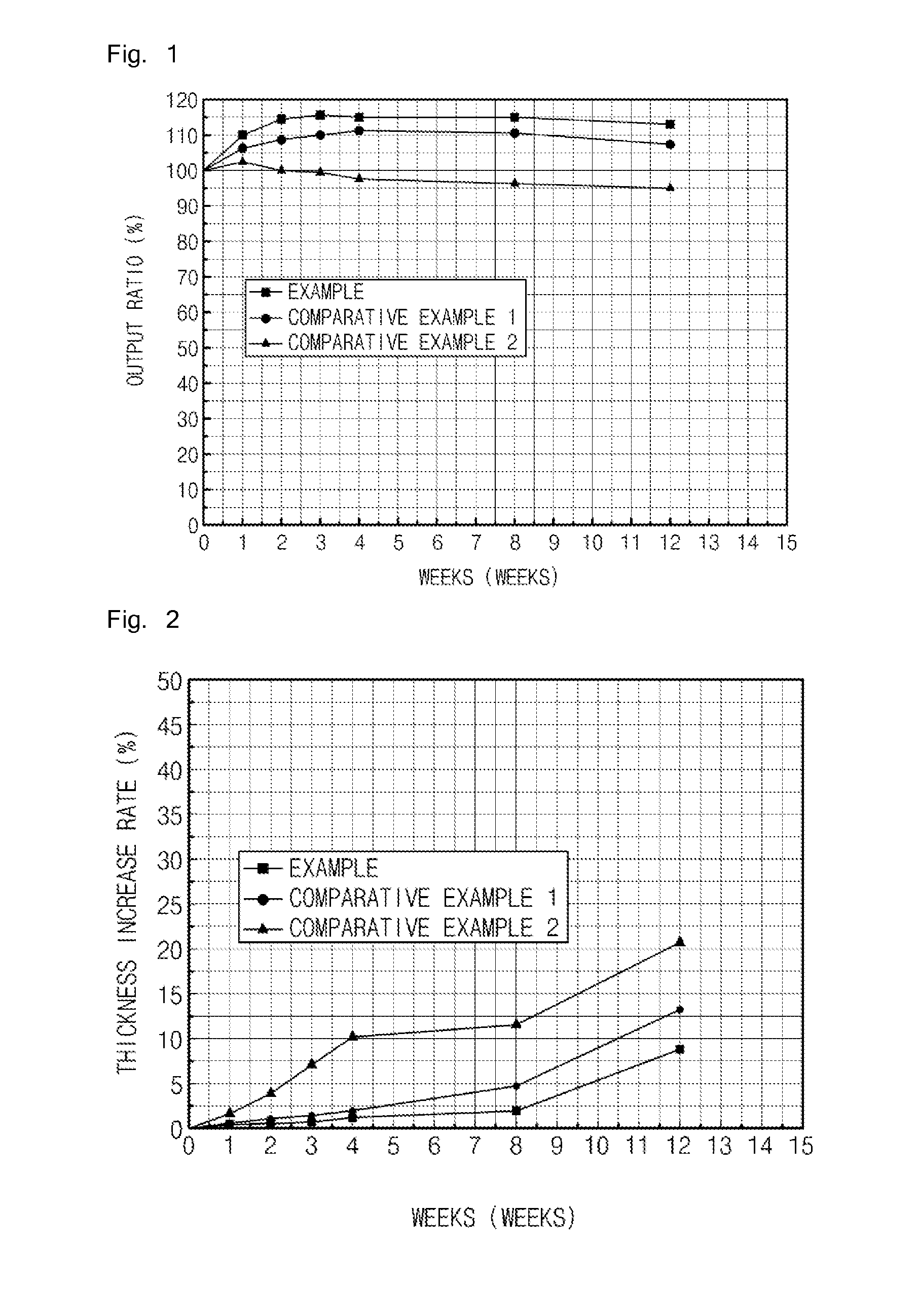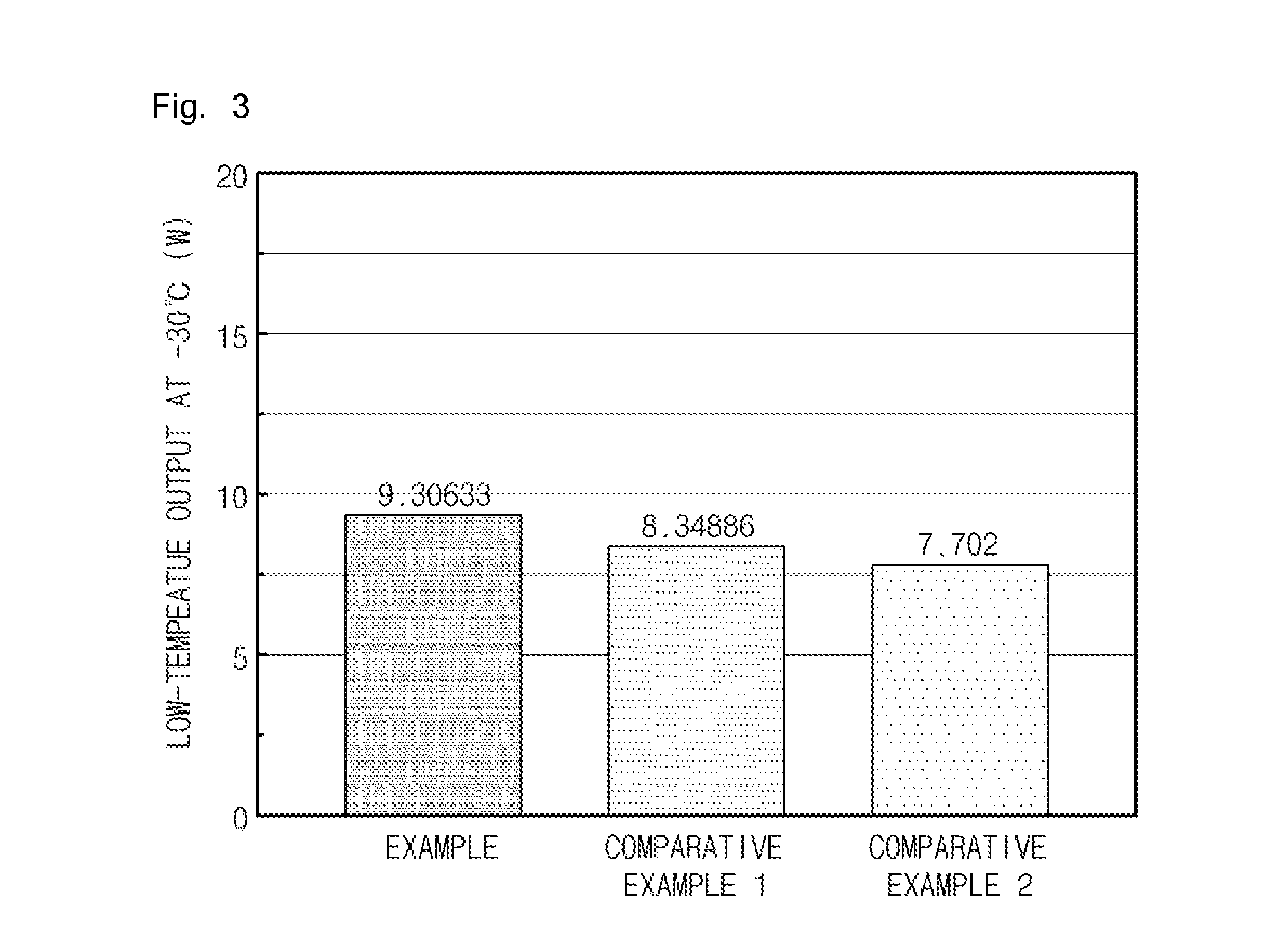Electrolyte solution additive for lithium secondary battery, and non-aqueous electrolyte solution and lithium secondary battery including the additive
a technology of electrolyte solution and lithium secondary battery, which is applied in the direction of batteries, non-aqueous electrolyte cells, cell components, etc., can solve the problems of low-temperature output characteristics that cannot be improved, and robust seis cannot be formed on the anode, so as to suppress the decomposition of pf6, improve output characteristics, and prevent swelling phenomena
- Summary
- Abstract
- Description
- Claims
- Application Information
AI Technical Summary
Benefits of technology
Problems solved by technology
Method used
Image
Examples
example 1
[0039][Preparation of Electrolyte Solution]
[0040]A mixed non-aqueous organic solvent having a composition, in which a ratio of ethylene carbonate (EC):propyl carbonate (PC):ethylmethyl carbonate (EMC):dimethyl carbonate (DMC) was 1.32:1.20:4.08:4.28 (parts by weight), 0.5 M LiPF6, and 0.5 M LiFSI were mixed, and a non-aqueous electrolyte solution was then prepared by adding 1 wt % of lithium difluoro bis(oxalato)phosphate (LiDFOP), 0.2 wt % of (trimethylsilyl)propyl phosphate (TMSPa), 1 wt % of 1,3-propene sultone (PRS), and 1 wt % of ethylene sulfate (ESa) based on 100 parts by weight of the non-aqueous electrolyte solution thereto.
[0041][Preparation of Lithium Secondary Battery]
[0042]A cathode mixture slurry was prepared by adding 92 wt % of LiCoO2 as a cathode active material, 4 wt % of carbon black as a conductive agent, and 4 wt % of polyvinylidene fluoride (PVdF) as a binder to N-methyl-2-pyrrolidone (NMP) as a solvent. An about 20 μm thick aluminum (Al) thin film as a cathode...
experimental examples
[0047]
[0048]While storing the secondary batteries prepared in Example 1 and Comparative Examples 1 and 2 at 60° C. for a maximum of 12 weeks, outputs were calculated from voltage differences which were obtained by respectively charging and discharging the secondary batteries at week 1, week 2, week 3, week 4, week 8, and week 12 at 5 C for 10 seconds at 23° C. The output capacity after high-temperature storage of the secondary battery corresponding to each storage period was calculated as a percentage based on initial output capacity (W, week 0) (output (W) of the corresponding week / initial output (W) 100(%)), and the results thereof are presented in FIG. 1. The experiment was performed at a state of charge (SOC) of 50%.
[0049]As illustrated in FIG. 1, it may be understood that the secondary battery of Example 1 had excellent output characteristics even after high-temperature storage at 60° C. In particular, since 4 kinds of the additives of the present invention were not used in the...
PUM
| Property | Measurement | Unit |
|---|---|---|
| thick | aaaaa | aaaaa |
| thick | aaaaa | aaaaa |
| temperature | aaaaa | aaaaa |
Abstract
Description
Claims
Application Information
 Login to View More
Login to View More - R&D
- Intellectual Property
- Life Sciences
- Materials
- Tech Scout
- Unparalleled Data Quality
- Higher Quality Content
- 60% Fewer Hallucinations
Browse by: Latest US Patents, China's latest patents, Technical Efficacy Thesaurus, Application Domain, Technology Topic, Popular Technical Reports.
© 2025 PatSnap. All rights reserved.Legal|Privacy policy|Modern Slavery Act Transparency Statement|Sitemap|About US| Contact US: help@patsnap.com


